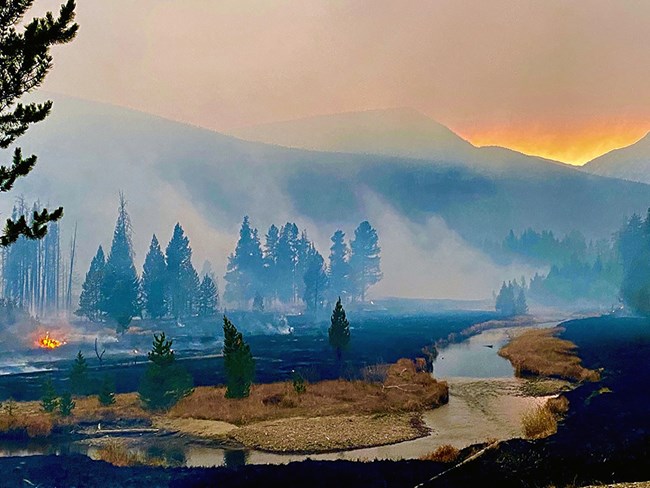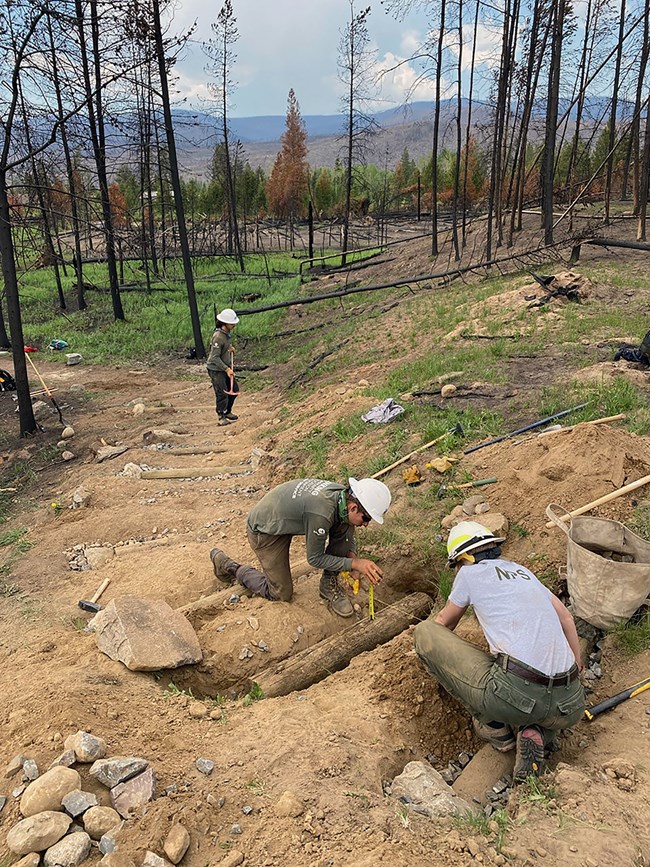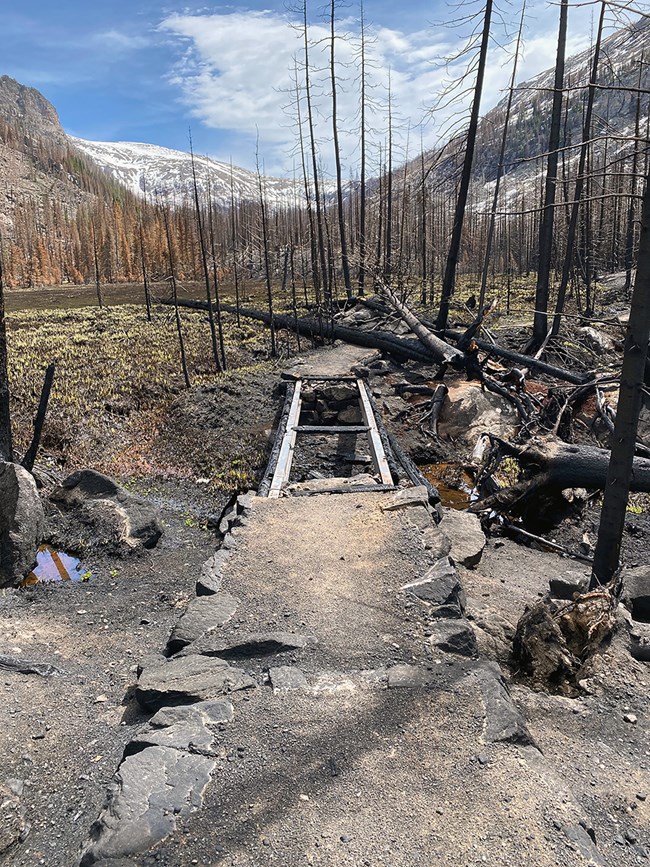Last updated: December 20, 2021
Article
Rocky Mountain National Park Rallies to Recover in the Aftermath of the East Troublesome Fire

NPS, C. Kopek

NPS
A scoping session was conducted with Burned Area Emergency Response (BAER) team members and park staff that identified 42 issues of concern. Immediate post-fire condition assessments in some of the areas burned were difficult to conduct due to the severity of damage, safety concerns, and wintry weather conditions. The Emergency Stabilization (ES) and Burned Area Rehabilitation (BAR) specifications were developed based on field observations, satellite imagery analysis, modeling efforts, and park expertise.
As staff assessed conditions in burn areas, park priorities evolved, driving post-fire stabilization activities and treatments. Trail crews cleared overhead hazards from the trail throughout the season. The wilderness crew determined 10 wilderness campsites must be obliterated and relocated due to asset damage, flooding potential, or exposure to hazard trees and downed logs. The trail crew, wilderness crew, vegetation crew, and cultural resources staff collaborated to rehabilitate trails. ROMO archeologists completed rapid post-fire archeological assessments along high priority trail corridors to support the reopening of trails/wilderness campsites and to ensure proposed repair/rehabilitation activities would not have an adverse effect to historic properties.

NPS
Despite the challenges of COVID, hiring, and the dynamic post-fire environment, the staff at ROMO rallied together as a team to implement ES and BAR treatments. Specific accomplishments include:
-
Surveyed and treated about 34 miles of trail for exotic plant infestations.
-
Reestablished a critical ungulate exclosure fence in the backcountry.
-
Stabilized 30 miles of trail by replacing erosion control structures and tread stabilization features, replacing seven multi-use bridges and 35 foot logs/footbridges, clearing fire-caused windthrow across trails, rerouting trails and recontouring and brushing campsites that were deemed unsafe or had sensitive features exposed.
-
Felled 68 acres of hazard trees that posed an imminent threat to life and safety.
-
Accomplished archeological site monitoring, protection, field data collection, and reporting to comply with Section 106 of NHPA for all Emergency Stabilization activities.
